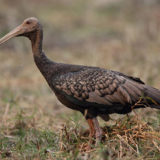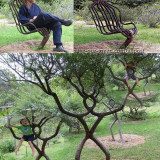Eight most beautiful and unique Butterfly
Eight most beautiful and unique Butterfly:
8. The 88 butterfly:
A species of tiny brush leg butterfly native to wet rainforests of central and south America these butterflies are members of the genus Diaethria and commonly known as 88 butterfly the upper part of their wings are brown or black with metallic blue band, the underpart of the upper two wings are bright red with wide black and thin white band,the underpart of the lower wings are white with black marking,the marking create the number “88” which is why they are known as the 88 butterfly.
7. Peacock butterfly:
The peacock butterfly occurs in temperate regions of Europe and Asia, with a range that extends from Britain and Ireland eastwards through Russia to eastern Siberia, the Korean peninsula and Japan. It is absent from northern Scandinavia and southern parts of Spain and Portugal. It also occurs in temperate regions of Turkey and northern Iran, and has been recorded at elevations of up to 2,500 meters. It is sometimes known as the European peacock, to distinguish it from another butterfly, from a completely different family, that occurs in North America.
6. Western tiger swallowtail butterfly (Papilio rutulus):
It is one of the largest butterfly. Wings are yellow with black tiger-striped markings. Has long tails on hind wings. The Pale Swallowtail (Papilio eurymedon) is similar in coloration pattern and is often found flying with Rutulus in moist canyons. The Pale Swallowtail, however, is cream-colored instead of yellow, with black striped markings. This beautiful butterfly is often observed gliding lazily among the willows. When disturbed, its rapid flight capability becomes apparent. It is not often seen nectaring at flowers, although in the canyons it occasionally comes down to the wet sand and mud along a stream to sip water and nutrients (a phenomenon known as “puddling”). Flight Period ranges from December through September.
5. Dead Leaf Butterfly:
Dead Leaf butterflies look brilliant when their wings lay flat . They are available in different colors and shapes. When they fold up their wings, they look like leaves – sometimes green, sometimes brown, as if fallen and dead. They are mostly found in forested, lush areas like New Guinea, southern Asia, Madagascar and India. The amazing way in which they camouflage themselves from predators is just fascinating.
4. Old World Swallowtail:
The Old World Swallowtail (Papilio machaon) is a butterfly of the family Papilionidae. The butterfly is also known as the common yellow swallowtail or simply the swallowtail (a common name applied to all members of the family).
3. Queen Victoria’s Birdwing:
These butterflies are restricted to the Solomon Islands where there are seven subspecies, most of which are named after the specific island on which they are found. The males have oval shaped wings with the rear wings being very elongated and wrinkled. The most similar species is the Queen Alexandria’s Birdwing. They fly high in the canopy, and in 1885 when a naturalist with a Royal Navy expedition was keen to capture one, a Royal Marine shot one down with a shotgun. That very butterfly is still part of the collection in the Natural History Museum, London. The males have a wingspan of up to 16 cm. The females have a wingspan of up to 20 cm. Huge as a butterfly, eh? It is classified as indeterminate in the ‘Red Data Book of Threatened Swallowtail Butterflies of the World’.
2. Glasswing butterfly:
It’s a real butterfly from Central America. It is called glasswing butterfly for their transparent wings. You can actually see through their wing. Their wings lack those scales that makes a butterfly’s wings. However, it helps them to hide in nature without any effort. Their wing automatically does that.
1. Monarch butterfly:
Monarch butterflies well-known for their wings. It has four generations. The fourth generation lives up to eight months. They used migrate as a large group from north America to south America. Their maximum life span is eight months. They used to take food in liquid form with their trunk. They mostly gather their food from flowers, or they are using their long ‘straw’ to drink up water out of shallow ponds. They used to migrate in large groups. They are famous for its southward migration and northward return in summer from Canada to Mexico and Baja California which spans the life of three to four generations of the butterfly. The Monarch’s wingspan ranges from 8.9–10.2 cm (3½–4 in.).














